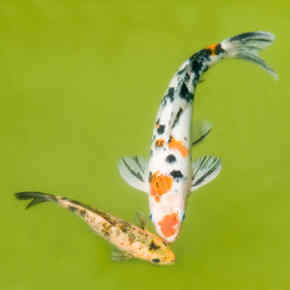
10 Effective Ways to Kill Algae in Koi Pond: Comprehensive Guide
Introduction
A Koi pond is a great addition to any backyard, but it requires some maintenance to keep it clean and healthy for your fish. One common problem that pond owners face is algae growth. Algae is an aquatic plant that can quickly take over your pond and turn the water green. Not only does it make your pond look unsightly, but it can also harm your fish by depleting oxygen levels. In this article, we will discuss some of the most effective ways to kill algae in Koi pond and keep your pond looking crystal clear.
1. Reduce Sunlight Exposure
Algae thrive in sunlight, so reducing the amount of sun exposure your pond receives can help control algae growth. You can add shade to your pond by installing a canopy or planting trees or shrubs around the perimeter. You can also add floating plants such as lilies or lotus flowers to provide shade and also absorb nutrients that would otherwise foster the growth of algae.

2. Keep Water Moving
Algae thrive in stagnant water, so keeping the water moving can help prevent its growth. A waterfall or fountain can circulate the water in your pond and create aeration, which can help reduce the amount of algae. You can also add an aerator or a pond pump to keep the water moving.
3. Clean Your Filter
Your pond filter is designed to remove debris and waste from the water, but over time, the filter media can become clogged with dirt and algae. Regularly cleaning your filter can help keep your pond water clean and reduce algae growth. Depending on the type of filter you have, cleaning may involve simply replacing the filter media, scrubbing or hosing down the filter, or backwashing the filter.

4. Use Algaecides
Algaecides are chemicals that kill algae and other aquatic plants. They work by disrupting the photosynthesis process of the algae. Algaecides can be effective for controlling severe cases of algae growth, but they should be used with caution as they can harm fish and other aquatic creatures. Always follow the instructions carefully when using algaecides and be sure to test the water regularly to ensure that the chemical levels are safe for your fish.

5. Use Barley Straw
Barley straw is a natural way to control algae growth in your pond. When barley straw decomposes in the water, it releases compounds that inhibit the growth of algae. Barley straw can be added to your pond in the form of a bale, pellets, or liquid extract. It is safe for fish and other aquatic creatures and does not harm plants or the environment.

6. Add Beneficial Bacteria
Beneficial bacteria can help control algae growth by consuming nutrients that would otherwise be used by the algae. These bacteria also break down organic matter, which can contribute to the growth of algae. You can add beneficial bacteria to your pond in the form of a powder or liquid. Be sure to choose a product that is specifically designed for use in ponds and follow the instructions carefully.

7. Add Plants
Adding aquatic plants to your pond can help control algae growth by competing for nutrients and shading the water to reduce sunlight exposure. You can choose from a variety of aquatic plants, such as water lilies, lotus, and water hyacinths. Be sure to choose plants that are appropriate for the size of your pond and the climate in your area.
8. Reduce Fish Population
Fish are a great addition to your pond, but having too many fish can contribute to algae growth. This is because fish produce waste that contains nutrients that algae feed on. If you have a large fish population, consider reducing the number of fish in your pond or increasing the size of your pond to accommodate them. You can also reduce the amount of fish food you feed your fish to help control algae growth.
9. Control Nutrient Levels
Algae thrive in nutrient-rich water, so controlling the nutrient levels in your pond can help reduce algae growth. You can test the nutrient levels in your pond using a water testing kit, and adjust the levels by adding or removing nutrients as needed. Nutrients can enter your pond from a variety of sources, including fish waste, fertilizer runoff from nearby gardens or lawns, and decomposing organic matter like leaves or dead fish. Removing debris from your pond regularly can help reduce the nutrient levels in your pond and prevent algae growth.

10. Keep Your Pond Clean
Keeping your pond clean and free of debris can help reduce the nutrient levels in your pond and prevent algae growth. Remove leaves, twigs, and dead plants from your pond regularly. Use a net to skim debris from the surface of the water. Vacuum the bottom of your pond to remove sludge and muck. A clean pond not only looks better, but it is also healthier for your fish and other aquatic creatures.
